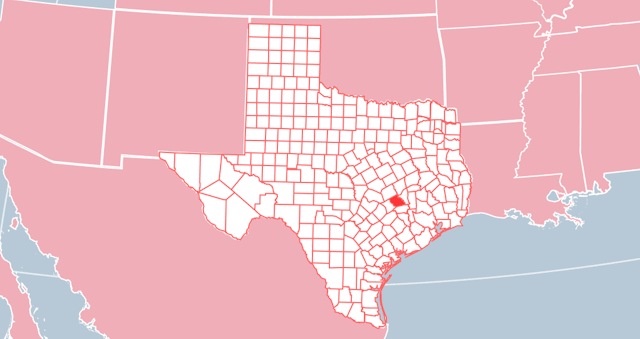Rehabs in Burleson
Burleson County was established in 1846 and took its name from Edward Burleson, one of the generals during the Revolution of Texas. Its administrative center is in Caldwell. According to the 2020 US Census, the region’s population was 17,642. This area is a famous place for camping, hiking, and fishing.
The issue of drug and alcohol abuse in this region is relatively inadequate. As to the report of the National Institute on Drug Abuse, in 2016, there were almost 60,000 people in TX, who need treatment for substance abuse problems, but only 18% of them received medical aid. In 2015, there were 1,379 drug-involved overdose deaths in TX.
In brief, substance abuse is a big problem in this community. Thus, people with drug and alcohol dependence should start their journey by entering rehab in Burleson County, Texas. Moreover, the effects of addiction also bring a rise in crime rates and a decline in overall quality of life. So, the state does its best to overcome the deadly effects of addiction and build a healthier society.
Read the article to get the details on the available recovery centers and find out a center that suits your personal goals of recovery.
Available Treatment Options
Drug and alcohol rehabs in Burleson County, Texas assist clients with substance abuse disorders, pain management, and eating disorders. Generally, the effective therapy lasts from 30-days to 90-days and depends more on the severity of the issue. It starts with detoxification. After your organism gets rid of toxins, your second step is to begin therapy, either in groups or individually. The patient engages in inpatient or outpatient treatment.
Detox
When the addict stops using substances, the body starts the process of withdrawal. The latter can have severe and even life-threatening effects. To safely pass this process, one should apply for a medically controlled detox course. The licensed staff will give you medication and will manage your withdrawal symptoms. No one should pass this procedure at home as it can cause unbearable pain and be even deadly.
Inpatient Program
Inpatient or residential rehab requires a patient to stay within the facility for a specific amount of time. During that period the person receives medical support and stays under strict control to overcome dependence. So, he/she is to have around-the-clock access to certified staff, evidence-based therapies, and treatments. Another advantage of this approach is the supervised environment, where the possibility of relapse is minimal.
Outpatient
In case of mild dependence, the addict might not need 24-hour care through an inpatient rehab. So, an outpatient program allows the patients to attend group and individual therapies as often as needed. Then, they may return home and continue with their daily routines, such as work or study. This type of care, emphasizes the support, that person receives from family and friends when leaving the hub.
Medication-Assisted Treatment (MAT)
MAT combines three main components: therapy, counseling, and medication management. When people are dependent on drugs, they will probably need medication to wean off their use of them. These pills block or replace the effects of opioids without mind-alerting effects. In MAT, medication is a part of a larger program. For effective recovery, the use of medication, as well as counseling, and various therapies are a must.
Aftercare
It is not always easy to maintain a sober living lifestyle after rehab. So, aftercare and alumni services are here to provide ongoing support. Their services include sober living homes, a 12-step curriculum, alcoholics, and narcotics anonymous meetings, and access to community resources.
Payment Options
To pay for the drug and alcohol rehabs in TX, residents generally use their private health insurance plans. Through these plans, they are to receive full or partial coverage. Check the policy details of your insurance agency and enter the hub that co-operates with them.
If you don’t have a private insurance plan, you can contact the centers that accept Medicaid and Medicare. Other payment methods include cash, sliding-fee scales, scholarships, payment plans based on your income, etc.

